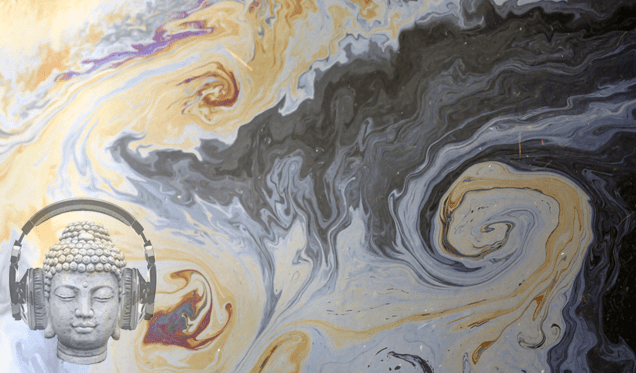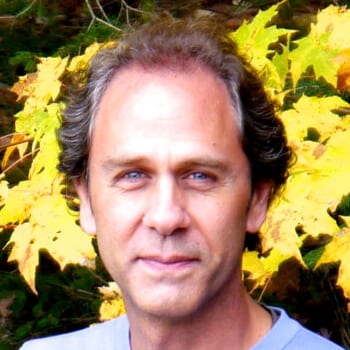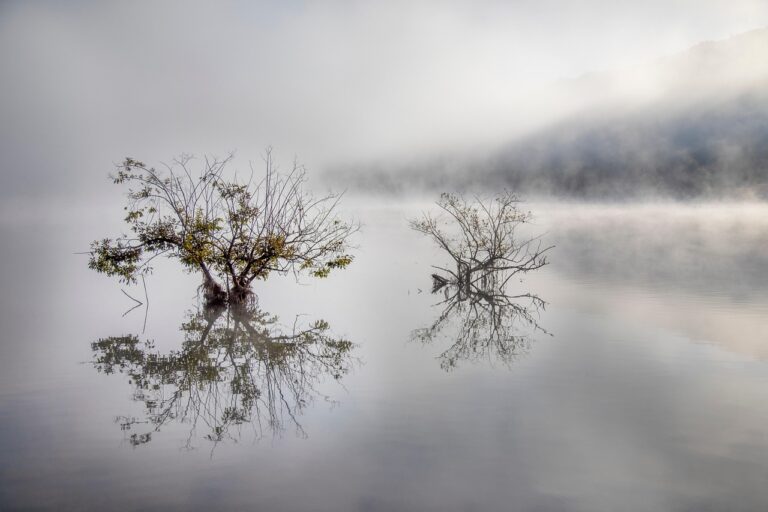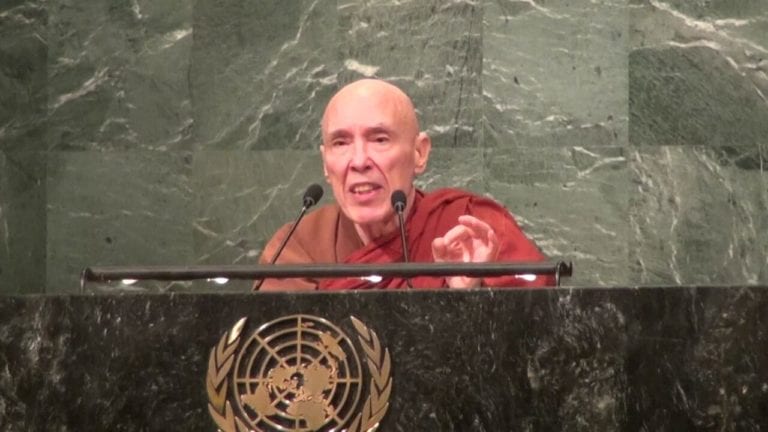How many times have you heard yourself or another student ask, “Why should I pay attention to this?” and the teacher says, “Because it is what is happening.” This is common instruction. We bring awareness of what is happening because it is presenting in our life at that moment.
There is one thing that is happening now that is not unique to any one of us. It is and will be impacting each of us for a long time. This thing is global climate change.
The reason to be aware of climate change is, on a certain level, the same reason you want to be aware of a pain in your knee. Why? Because it is happening. In order to have a correct or helpful relationship with what is happening it is good to get to know it, learn about it, connect with it, and consider what our relationship to it might be. We do that with everything – a thought, the sound of a cricket, a pain in our body. And so, because it’s happening, the practice tells us it would be good to pay attention to global climate change as well.
Paying attention to climate change can be difficult. Even as you read this, you might want to keep checking in with your bodies – perhaps notice any reactivity you might have. Now, this is not going to be a gloom and doom discussion, so you don’t have to worry about that. But it would be good to stay connected and feel your way into the question, “How am I relating to this?”
I am not going to go in to a lot of statistics, like how many feet sea level is going to rise, or how many degrees Celsius the average temperature is going to go up, or by what date will there be no ice in the arctic. That information is out there. It is available and easy to find. This is more about beginning to grapple with this situation that is impacting us now and will continue to effect us at a greater and greater level far into the future. This is going to keep going so it’s very important to consciously turn towards what is occurring.
Smoke and Mirrors
There is an interesting study in which the study subjects were put into a room and told to fill out a form. The subjects were lead to believe that filling out this form was the purpose of the study. In the room where the participants were working was an air vent. The conductors of the study, after the participants began filling out their forms, pumped smoke into the air vent. When that happened the people would see the smoke, leave the room, and go to the researchers and say “There is something wrong in that room! Smoke coming out of the vent!” This was a very natural and appropriate response.
The researchers conducted the study again, with different participants, only this time alongside the five subjects was one “plant” (who appeared to be a survey participant, but was actually “in” on the study). When the researchers pumped smoke into the room this time the plant pretended not to notice it. This person just kept filling out their form as though nothing was wrong. The study was conducted many times and each time the people who were participating in the survey displayed the very same behavior: they would look at the person who wasn’t reacting to the smoke and then they too would turn back to their work and continue to fill out their forms. The survey subjects did not get up and leave the room or respond in any way to the smoke until much, much later.
The impact of that person carrying on with business as usual was strong. In the face of one person disregarding the smoke, the natural inclination of the other participants to respond to danger went out the window.
I tell this story because this is where we are with climate change. The smoke is coming through the vents. It is very clear. But there are strong forces, which I will talk about, that are carrying on with business as usual and we all get caught up in it. We get frozen. There is no national dialogue. We are like those people who say, “Oh, someone is not reacting to this. I guess I don’t need to react, either.” For this reason alone it is helpful to consciously turn towards and start to talk about climate change. So that we break the freeze.
No Escape
For us as Dharma practitioners the purpose of this talk is to show how the teachings can shed light on the forces that have led us to this point as well as what an appropriate response might be. To be clear, climate change is not a political issue. I am not talking politically, from one side or another. Of course, climate change is discussed in politics, but what I am addressing is the truth of what is happening right now, what is going to happen in the near future, and what will be happening in fifty to a hundred years from now.
The biosphere – that layer of life on the earth that begins a few inches down in the soil and rises up through the atmosphere to where birds and insects live – is very thin. And right now, it is rapidly changing – faster than it ever has in history. The species that live in this biosphere, and in turn make up part of it are suffering, are dying off. We are currently in the midst of the largest species die-off, or mass extinction, since the passing of the dinosaurs some 60 million years ago.
People are suffering and they will continue to suffer at an exponentially increasing rate as time goes on. This is not a political issue, this is a moral issue. It transcends political, cultural, and religious boundaries because it is happening to the whole planet.
Now I just want to say even though all people are impacted, and will be increasingly impacted by climate change over time, not everyone will be impacted in the same way. Unfortunately, as with other factors such as political and economic turmoil, people who are the most advantaged are buffered against harm. The people with the least advantage bear the brunt of the destruction. It is this way with many things and it will be this way, at least to some degree, with increasing climate change.
So the people who are disenfranchised are going to bear the brunt of the suffering, but everyone will be impacted. Because even the people who might be quite buffered from the effects of climate change will experience something. Part of the way that people with advantage experience climate change will depend on how they work with that gap between themselves and disenfranchised people. If they don’t bridge that gap in some way but instead just stay in the white castle they may not, for some time, be impacted on the physical level. But to do that, to cut themselves off in this way, will have an impact.
The analogy that comes to me is what happened when the Titanic sank. The people who were in first class had life boats, and the people in second and third class did not. So there the people from first class were in their life boats while the ship was sinking and the people from second and third class were drowning. Yes, they were safe and dry in their boats. But they had to live with the knowledge that they didn’t row back. They didn’t bridge that gap.
So everyone is going to be impacted. Everyone is going to have to deal with climate change in one way or another. For some the effects may be more physical. Other people might be dealing with it more on the level of the heart and the mind. But it is a part of everyone’s reality from here on out.
The Dharma of Climate Change
So, that is about as grim as this series of posts is going to get! What I am going to explore, in the next three installments of this series, are these two questions:
- How do the teachings of the Dharma shed light on the causes of global climate change.
- How can we respond to such a huge issue, and what might an appropriate response be.
In part 2, “How Did We Come to This?”, Chas explores the roots of global climate change.
This transcription has been edited for readability as a Dharma article. Stay tuned for the third of four posts transcribing Chas’s talk. If you prefer, listen to the full talk here on DharmaSeed:
The Dharma Of Global Climate Change







